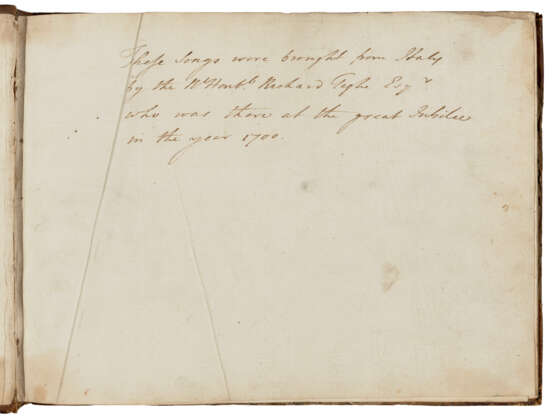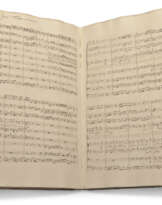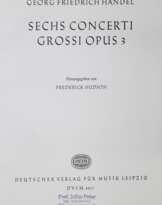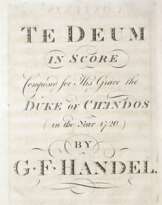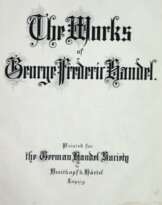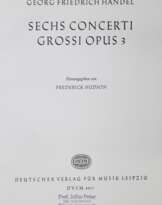ID 1109025
Lot 225 | George Frideric Handel (1685-1759) and others
Estimate value
£ 30 000 – 50 000
Manuscript of c.80 Italian arias, [Italy], [c.1700-1707], with an autograph annotation by Handel
c.160 pages, oblong quarto, almost entirely on 10-stave Venetian paper, written in a number of hands. Quarter calf binding, marbled boards.
Provenance:
(1) The Venetian paper and selection of arias in the present manuscript point to Italy as a place of production. The arias were composed and first performed c.1700-c.1710; the music is notated in a number of scribal hands, generally bearing indications of theatrical provenance, including ‘S[an] Gio[vanni] Grisostomo’, ‘S[an] Cass[i]ano’ and S[an] Luca’, as well as authorship.
(2) Richard Tighe (1678–1736), MP and privy councillor; an inscription on the flyleaf reads: 'These Songs were brought from Italy by the Rt Honbl Richard Tighe Esqr who was there at the great Jubilee in the year 1700’. Tighe, who is recorded as being in Italy between 1700 and 1707, may be the scribe of the earlier group of arias by Scarlatti, Lotti and others.
(3) Evidently in the proximity of George Frideric Handel at some point in the 18th century, when he annotated his own aria.
(4) Sotheby's, 16 & 17 May 1991, lot 262.
A volume of arias comprising works by Handel, Alessandro Scarlatti, Lotti, Garsparini, Caldara, Marcello, Ziani and others, including Handel’s famous soprano aria, ‘Ho un non sò che nel cor’ bearing the composer’s autograph annotation. Also of particular note is a group of arias deriving from an apparently lost opera by Marc’Antonio Ziani. Handel’s ‘Ho un non sò che nel cor’, from his opera Agrippina (1709), was one of the composer’s most popular arias, being a contrafactum of an earlier composition from his oratorio, La resurrezione (1708) and was again reworked for the opera Il pastor fido (1712), Handel’s second to premiere in London. This particular copy bears the autograph annotation by Handel, ‘Violini senza Hautb[ois]’ (partially cropped by the binder). A group of arias has been identified as likely to be from Ziani’s Il duello d’amore e di vendetta, performed in c.1700 at the Teatro San Luca, for which this volume appears to be the only extant source for the music. Il duello’s libretto, by Francesco Silvani, was later adapted for Handel’s Rodrigo (1707). Of historical significance is the duet Qui veggo I for che brillano by Benedetto Marcello, which bears the inscription ‘Atto Secondo Scene 9’ and the names of characters, indicating a dramatic origin. The work is that which is recorded by Eleanor Selfridge-Field as Primavera infelice, the earliest source for which being from 1717. No dramatic presentation is listed and no opera by Marcello is known.
| Address of auction |
CHRISTIE'S 8 King Street, St. James's SW1Y 6QT London United Kingdom | |||||
|---|---|---|---|---|---|---|
| Preview |
| |||||
| Phone | +44 (0)20 7839 9060 | |||||
| Buyer Premium | see on Website | |||||
| Conditions of purchase | Conditions of purchase |

